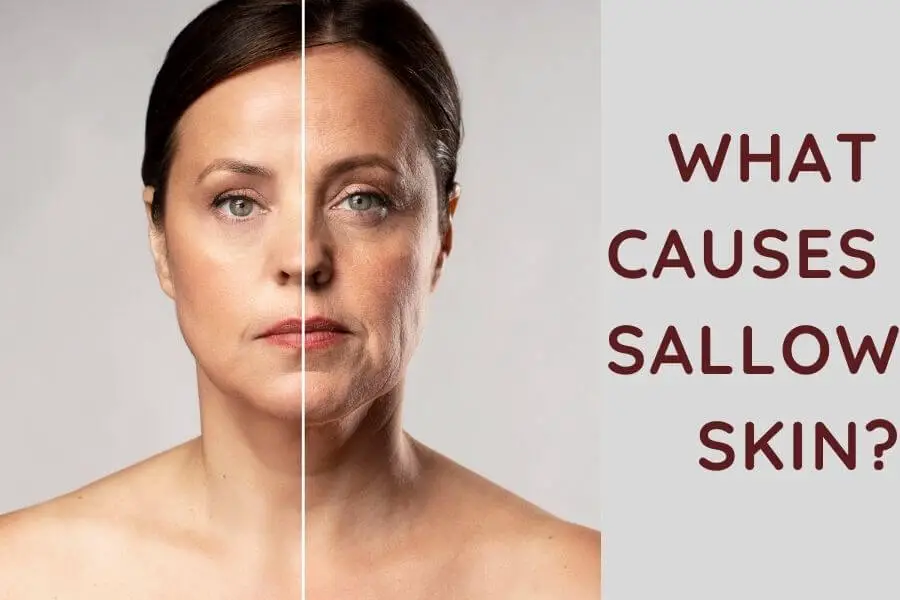Sallow skin is a condition that causes the skin to look yellowish. While it’s not often related to a serious medical condition, sallow skin can make people feel self-conscious.
There are many things that can cause sallow skin, including liver disease, dehydration, and certain medications. Fortunately, there are treatments available that can help improve the appearance of sallow skin.
Keep reading for tips on how to identify sallow skin, as well as advice on how to get rid of this condition for good.
What is sallow skin?
Sallow skin is a condition in which skin looks yellowish or jaundiced. This can be caused by conditions such as liver disease, kidney disease, arthritis, or certain medications.

Sallow skin occurs when the body doesn’t metabolize fats correctly and this causes yellowness to appear on the surface of the skin.
What causes sallow-looking skin?
Some of the common causes of sallow skin include;
- Stress
- Inadequate Sleep
- Dehydration
- Wrong skincare routine
- Smoking
- Medication
While there’s no immediate fix, drinking lots of water and eating healthily will go a long way toward improving how you look and feel.
Stress
Stress and stress-related eating can lead to weight gain. This can make sallow skin even more noticeable, as well as exacerbate other symptoms associated with fatty liver disease.
Inadequate Sleep
Both inadequate sleep and not getting enough exposure to sunlight can cause sallow skin
Dehydration
When the body is dehydrated, it affects the way you look and feel. It’s important to make sure that you’re drinking plenty of water each day in order to maintain a healthy glow.
Dehydration can cause sallow skin, so staying hydrated is one of the simplest ways to get rid of jaundiced skin. Water helps flush toxins from the body, which in turn helps you look younger and healthier.

Drinking 8-10 glasses (about half a gallon) of water every day will improve metabolism and help your body naturally flush out toxins.
Smoking
Smoking cigarettes can lead to a buildup of toxins, which will usually show up on your face first. If you want to look your best, quit smoking for good.
Wrong skincare routine
In many cases, women who wear makeup every day tend to neglect their skincare routine. As a result, they end up with sallow-looking skin that needs correcting from the inside out by eating nutrient-rich foods and taking supplements.
Medications
If you’re taking any medications, it’s important to ask your doctor if they could be the cause of sallow skin. Some medications can affect how your liver works and thus cause jaundice-like symptoms.
Avoiding certain drugs is one way to improve your complexion and even reverse some of the effects of poor liver function.
How to correct sallow skin?
If you have ever looked in the mirror and seen a yellowish hue to your skin, you may have sallow skin. While it’s not a life-threatening condition, sallow skin can make you look tired, old, and unhealthy.

Luckily, there are steps you can take to correct this problem and restore a healthy glow to your complexion.
Getting enough water is a great place to start. Dehydration can cause sallow skin, so staying hydrated with lots of water will help flush out toxins and give you a healthier appearance
On days that you can’t seem to get enough H2O, try drinking fruit juice or supplementing with Vitamin C to boost your hydration levels even further.
In addition, eating healthy foods filled with potassium and antioxidants can improve your complexion in as little as a few weeks.
Exfoliate once or twice a week to remove dullness and dry patches that may be causing the coloration on your skin. Exfoliating will also help unclog pores so your skin looks less blotchy.
Use a facial scrub two times each week to clean out any residual dirt or makeup clogging pores and causing uneven coloration on the surface of your face.
Invest in a mattifying lotion to help prevent your face from looking shiny throughout the day. This can also help balance out blotchiness, giving you a more evenly toned complexion
Finally, using an enzyme mask once or twice each week will help reduce any yellowish coloration on your skin. After removing this mask, follow it with a moisturizer to hydrate and soften your skin.
Final Thoughts
If you have been experiencing any of the symptoms mentioned above, it’s important to see a dermatologist for an accurate diagnosis before beginning treatment.
This way, you’ll know exactly what type of condition you’re dealing with and how to get rid of your sallow skin.

